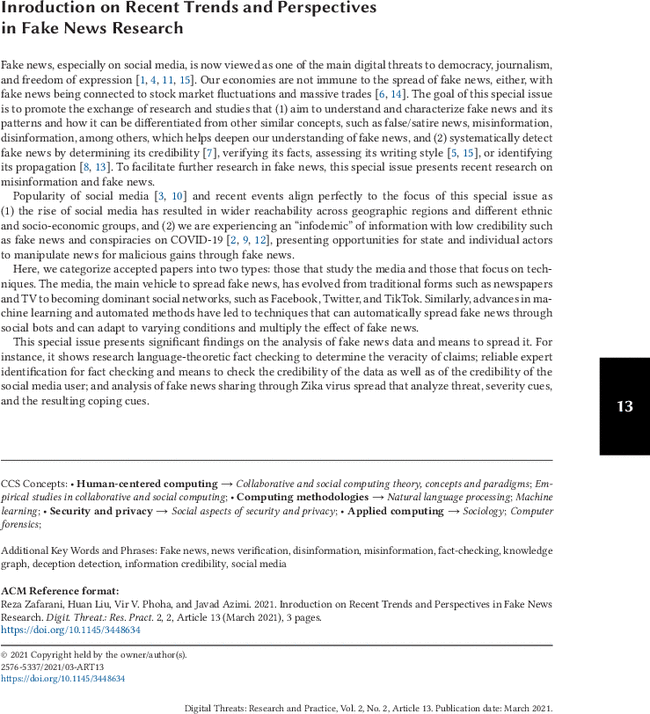Cited By
View all- Yan FZhang MWei BJiang WRen K(2023)Fake News Detection Utilizing Social Context Information with Graph Convolutional Networks and Attention MechanismsProceedings of the 2023 7th International Conference on Electronic Information Technology and Computer Engineering10.1145/3650400.3650466(406-413)Online publication date: 20-Oct-2023



